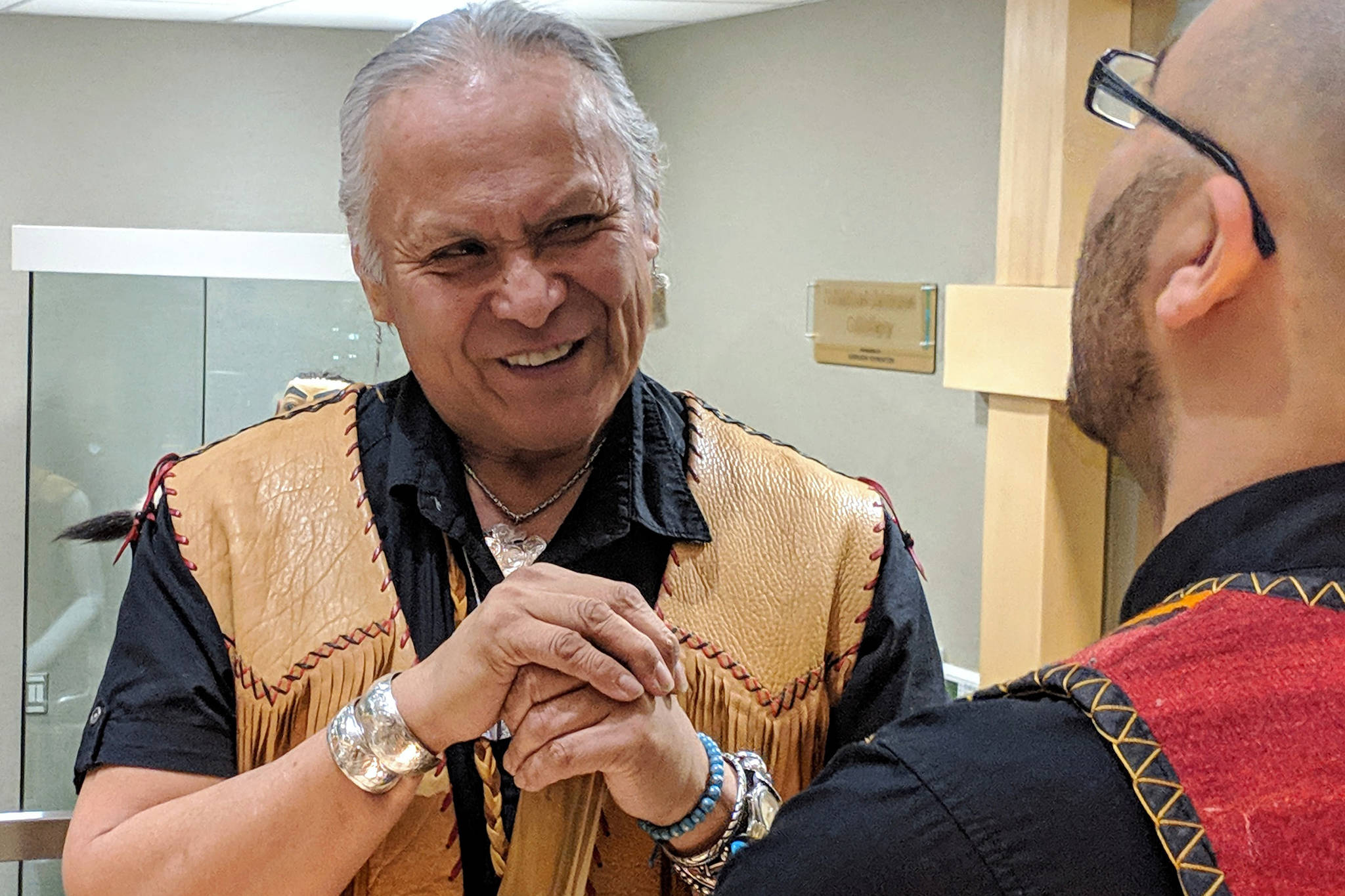George Montero’s journey with music started in Juneau.
Decades before he learned to play and make Native American flutes, Montero played the French horn at St. Ann’s School beginning in third grade as part of a general musical appreciation curriculum.
“We’d play anything but rock’n’roll —anything but Elvis Presley,” Montero recalled.
However, Montero’s music career, which has brought him to Washington D.C. to play at the Smithsonian’s National Museum of the American Indians and recently to Juneau for a pair of concerts, didn’t really start until Montero, now 70, was in his mid 50s.
Montero was born and raised in Juneau, but has resided in Washington state for decades and currently lives in Seattle. That’s where he saw the instruments about 17 years ago that would change his life.
“I’ve been exploring music most of my life,” Montero said. “As far as the Native American flute, it was 2002 when I first picked up one.”
They are Native American flutes rather than Native Alaskan flutes because woodwinds like the ones Montero plays were not traditionally a Tlingit instrument.
Montero came across them when he was at a Northwest Treaty Tribes pow wow and saw a man with a number of flutes as well as a carved plaque of a Shangukeidí (Thunderbird) clan crest. Both items caught Montero’s attention.
“He asked me do you play the Native American flute, and I said, ‘No I don’t sir, but I’m interested in learning how to play the flute and how to make the flute,” Montero said. “Once I’ve learned to make the flute, I’ll learn to play the flute.”
It wasn’t long after their meeting that Montero made his first flute.
“The first flute that I made had a piece of black walnut, and I made a Shangukeidí design,” Montero said. “I made a thunderbird that was sitting on a cloud, and right in front of her was a baby thunderbird.”
Traveling and learning
With the first flute made, Montero said he began to teach himself melodies.
Since then, Montero estimates he’s probably made a dozen flutes.
As evidenced by performances at a Flutes From Around the World concert at the Shuká Hít (clan house) Saturday and a free public concert Tuesday, Montero has learned more than a few melodies over the years.
Among the songs he played were original compositions “Shangukeidí Thunderbird Song,” “Tsaagweidí Killer Whale Song,”and more familiar fare such as “Ave Maria” and “Colors of the Wind.”
Montero said he has a complicated relationship with that last song from Disney’s “Pocahontas.”
“I don’t really agree with the movie, but I really agree with the words of the song,” Montero said.
The song contains an anti-colonial sentiment that doesn’t entirely jibe with the rest of the movie. Plus, Montero said he played the song for an ailing friend in the hospital, and it remains a favorite of his grandchildren.
“The song has a lot of heartfelt meaning to me,” Montero said.
Montero said the style of playing he’s developed in heavily influenced by Vincent Redhouse, an award-winning Native American flautist, who Montero considers a friend.
That’s who taught Montero “Ave Maria,” but first Montero had to play for Redhouse.
“It was like playing guitar for Carlos Santana,” Montero said.
Glad to be in town
Montero has played in Seattle, Washington D.C., and Arizona but said he was was especially happy to be “home” in Juneau for Saturday and Tuesday concerts.
“I’m Tlingit, I’m from Juneau, and I have a very high amount of pride in that,” Montero said. “I’m humbled to be back home to share some of the music.”
However, Montero did more than just play concerts while in town.
He said he participated in Saturday’s Women’s March and was impressed with the event.
Montero said he would also like to spread his music around.
“If I have time, I’d like to go to the senior center and play music,” Montero said.

